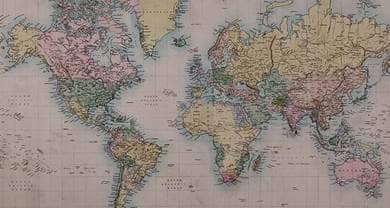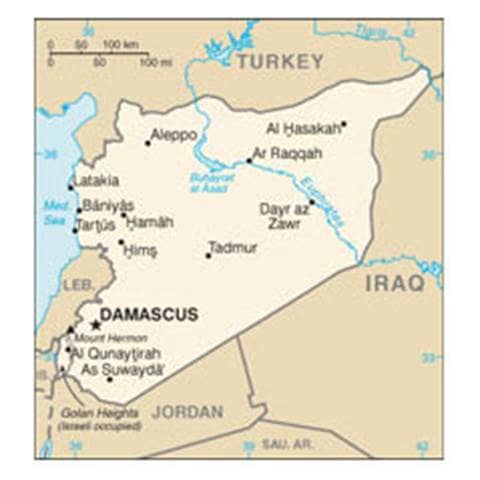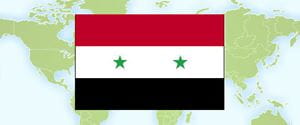- Trending:
- Pope Leo Xiv
- |
- Israel
- |
- Trump
- |
- Social Justice
- |
- Peace
- |
- Love

RELIGION LIBRARY
Syria

The country has an area of 71,498 square miles and a population of 20 million. Sunnis constitute 74 percent of the population and are present throughout the country. Other Muslim groups, including Alawites, Ismailis, and Shi'a, together constitute 13 percent. The Druze account for 3 percent of the population. Various Christian groups constitute the remaining 10 percent.
The minority Alawite sect holds an elevated political status disproportionate to its numbers because President Asad and his family are Alawites.
The majority of Christians adhere to the Eastern groups that have existed in the country since the earliest days of Christianity. The main Eastern groups belong to the autonomous Orthodox churches, the Uniate churches (which recognize the Roman Catholic Pope), or the independent Nestorian Church. There is also a Yezidi population of 30,000, and there are between 100 and 200 Jews. It is difficult to obtain precise population estimates for religious groups due to Government sensitivity to sectarian strife. The Government conducts a census every 10 years, the most recent of which was in 2004. The census did not include information on religious and ethnic demographics, and there is no evidence any census specifically asked people to identify their religious affiliation.
The largest Christian group is the Greek Orthodox Church, known in the country as the Greek Orthodox Patriarchate of Antioch and All the East. Most citizens of Armenian descent belong to the Armenian (Apostolic) Church, which uses an Armenian liturgy. The largest Uniate church in the country is the Greek Catholic Church. Other Uniate groups include the Maronite Church, the Syrian Catholic Church, and the Chaldean Catholic Church, which derives from the Nestorian Church. Protestant Christian denominations include Baptists and Mennonites. The Church of Jesus Christ of Latter-day Saints (Mormons) is also present.
Most Christians live in urban centers in and around Damascus, Aleppo, Homs, Hama, and Lattakia, although significant numbers live in the Hasaka governorate in the northeast. The majority of Alawites live in the mountainous areas of the coastal Lattakia governorate. Many of the Druze live in the rugged Jabal al-Arab region in the southern governorate of Suweida where the Druze constitute the vast majority of the local population. The few remaining Jews are concentrated in Damascus and Aleppo. Yezidis are found primarily in the northeast.
| Population | Population (2009 est.) 20,178,485 |
| Religious Demographics | Sunni Muslim 74%, other Muslim (includes Alawite, Druze) 16%, Christian (various denominations) 10%, Jewish (tiny communities in Damascus, Al Qamishli, and Aleppo) |
| Ethnic Groups | Ethnic Groups Arab 90.3%, Kurds, Armenians, and other 9.7% |
| Languages | Languages Arabic (official); Kurdish, Armenian, Aramaic, Circassian widely understood; French, English somewhat understood |
| Country Flag |  |










